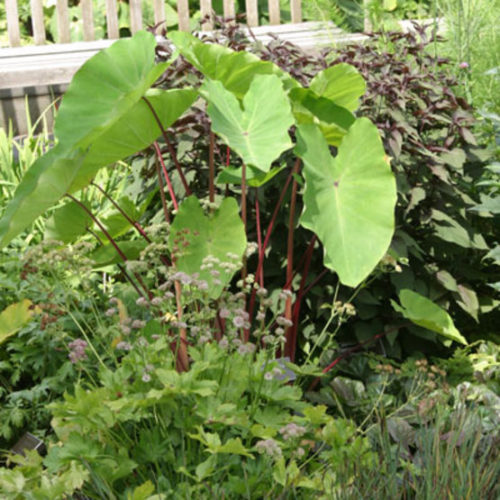
Kitchen garden rhubarb doesn’t hold a candle to ‘Rhubarb’ elephant’s ear, at least not in an ornamental sense.
Noteworthy Characteristics‘Rhubarb’ earned its name for the slender red stems that support its spade-shaped foliage.
CareGive ‘Rhubarb’ full sun or partial shade and rich, moist soil, and it will return the favor by producing lots of pretty leaves on exciting red stems. This elephant’s ear can even live happily submerged in water. Gardeners in cool hardiness zones may overwinter plant’s tubers indoors covered by peat moss during winter, after the leaves have been desiccated by frost.
PropagationPlant ‘Rhubarb’ tubers when soil is consistently around 70°F. Separate offsets in spring or summer.
ProblemsIf the tubers are kept too wet during winter storage, they may rot. Keep the tubers and peat moss slightly damp, never wet.
- Genus : Colocasia
- Plant Width : 1 to 3 feet
- Zones : 10, 11, 8, 9
- Plant Height : 3 to 6 feet
- Uses : Containers
- Light : Full Sun to Partial Shade
- Foliage Color : Green
- Moisture : Medium to Wet
- Maintenance : Moderate
- Growth Rate : Moderate
- Plant Type : Perennials
- Characteristics : Showy Foliage
- Plant Seasonal Interest : Summer Interest



























